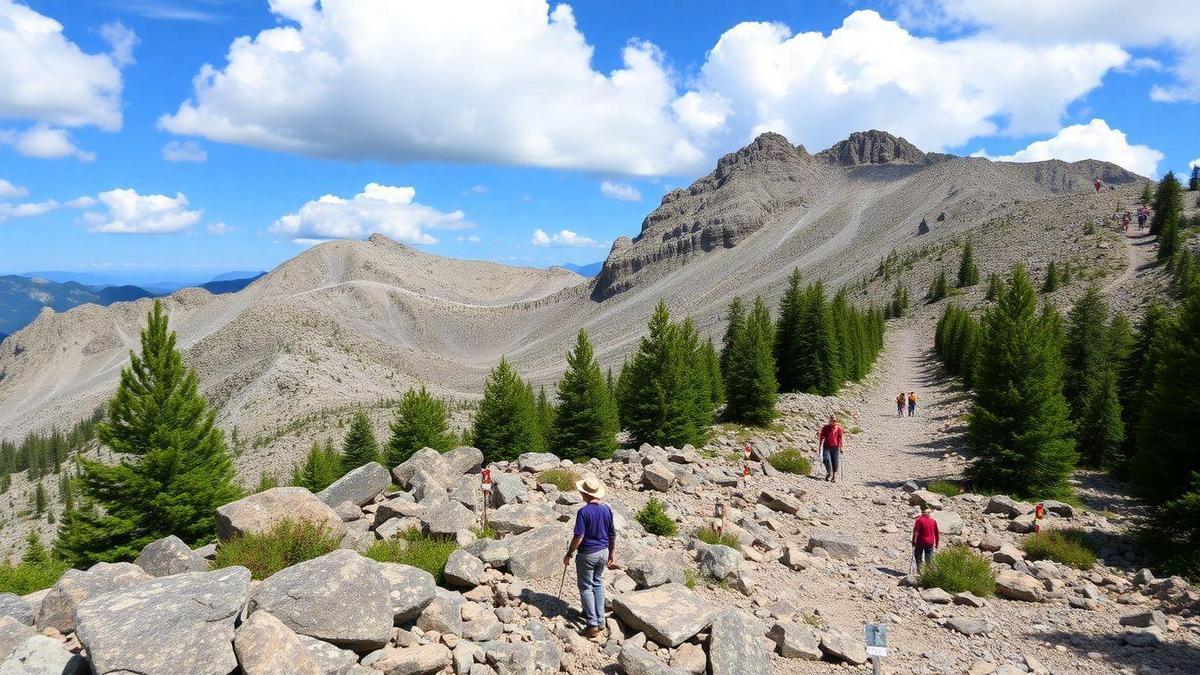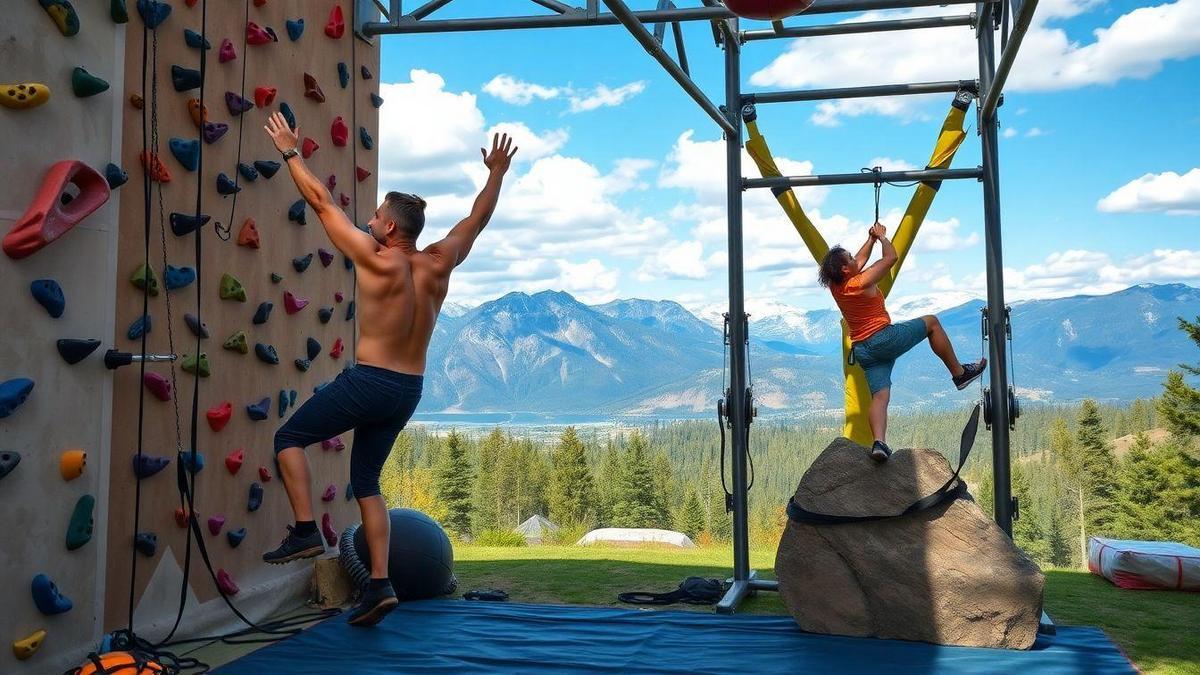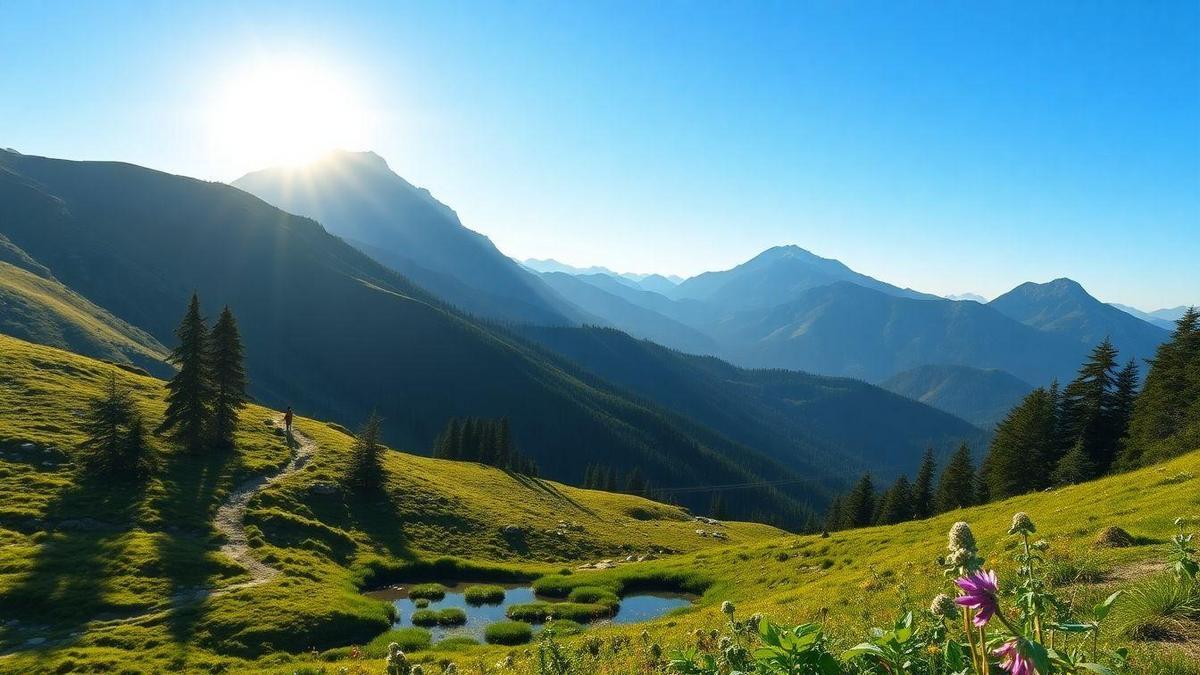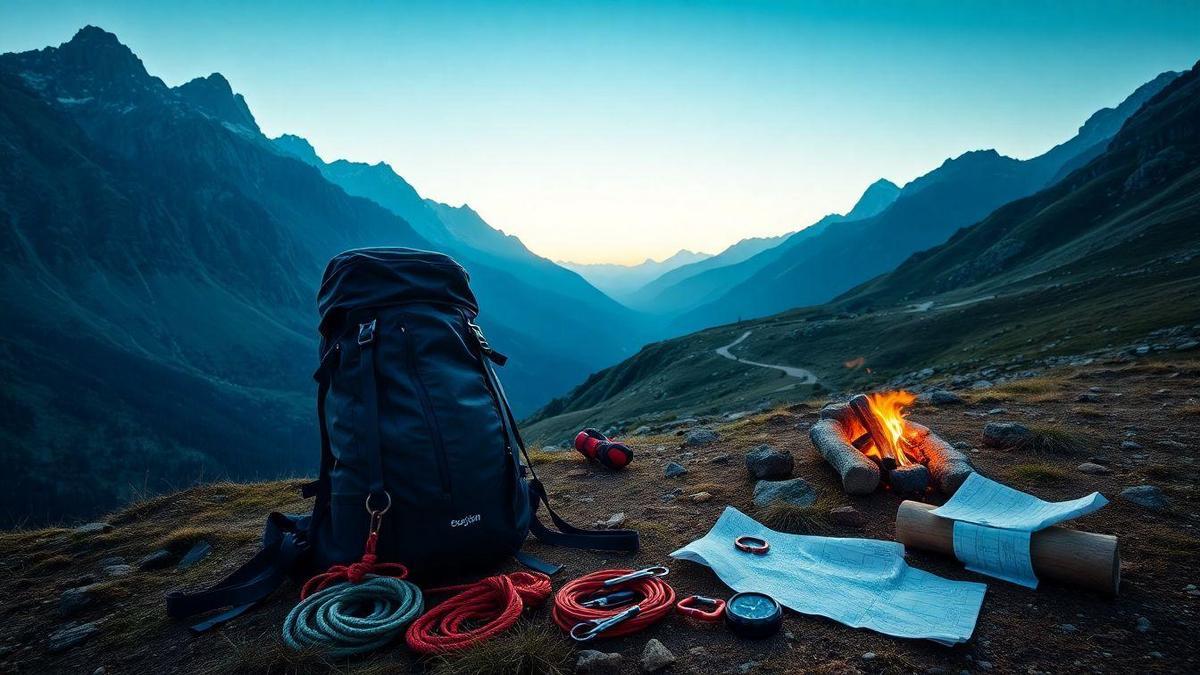
Understanding Climbing Routes Suitable for Novice Mountaineers
What Makes a Climbing Route Beginner-Friendly?
When you’re just starting out in the world of climbing, finding the right route is crucial. A beginner-friendly climbing route should have a few key characteristics:
- Gentle Slopes: Look for paths that aren’t too steep. You want a route that feels more like a walk in the park than a steep climb.
- Clear Markings: Well-marked routes help you stay on track. You’ll feel more confident when you can see where to go.
- Low Technical Difficulty: Avoid routes that require advanced skills like rock climbing. Stick to trails that let you enjoy the scenery without worrying about tricky moves.
Key Features of Novice Mountaineering Trails
Novice mountaineering trails come with features that make your climb enjoyable and safe. Here are some of the key elements to look for:
| Feature | Description |
|---|---|
| Wide Paths | More space means less chance of falling. |
| Stable Terrain | Look for trails with solid ground, avoiding loose rocks. |
| Rest Areas | Spots to catch your breath and enjoy the view. |
| Accessible Start Points | Easy access makes it simple to begin your adventure. |
These features help you feel at ease while you explore the beauty around you.
Safety Considerations for Easy Climbing Paths
Safety should always be on your mind, especially on easier routes. Here are some safety tips to keep you secure:
- Check the Weather: Always look at the forecast before you head out. Bad weather can change quickly.
- Stay Hydrated: Bring enough water. Dehydration can sneak up on you.
- Wear Proper Gear: Good shoes and clothing are essential. They help you stay comfortable and safe.
- Tell Someone Your Plan: Let a friend know where you’re going. It’s a smart way to stay safe.
By keeping these safety tips in mind, you can enjoy your climb with peace of mind.
Essential Gear for Beginner-Friendly Climbs
Must-Have Equipment for Novice Mountaineers
When you’re starting your mountain climbing journey, having the right equipment can make all the difference. Here’s a list of must-have gear to help you tackle those beginner-friendly climbs:
- Climbing Shoes: These give you the grip you need on rocky surfaces.
- Harness: A comfortable harness keeps you safe while climbing.
- Helmet: Protect your head from falling rocks or bumps.
- Backpack: A sturdy pack to carry your gear.
- Water Bottle: Staying hydrated is key!
- First Aid Kit: Just in case of minor injuries.
- Map and Compass: Essential for navigation.
How to Choose the Right Gear for Climbing
Selecting the right gear can feel like a puzzle, but it doesn’t have to be. Here are a few tips to help you pick the best equipment:
- Comfort: Always try on gear before buying. If it doesn’t feel good, it won’t help you climb.
- Fit: Make sure your shoes and harness fit snugly but not too tight.
- Weight: Lighter gear is easier to carry, especially on long climbs.
- Durability: Look for gear made from strong materials. It should last through many adventures.
| Gear Type | Key Feature | Why It’s Important |
|---|---|---|
| Climbing Shoes | Grip and Comfort | Helps you climb better |
| Harness | Safety and Fit | Keeps you secure |
| Helmet | Protection | Shields your head |
| Backpack | Capacity | Holds all your essentials |
Tips for Packing Light on Simple Climbing Adventures
Packing light can make your climb more enjoyable. Here are some ways to lighten your load:
- Plan Your Meals: Bring easy-to-carry snacks like trail mix or energy bars.
- Limit Clothing: Choose clothes that can be layered for warmth.
- Use Multi-Purpose Gear: Find items that serve more than one purpose. For example, a bandana can be a headband or a towel.
- Check the Weather: Pack only what you need based on the forecast.
By following these tips, you can make your climb not just easier but also more fun. Remember, the right gear and a light pack can be your best friends on the trail.
The Importance of Climbing Skills for Beginners
Basic Techniques Every Novice Should Learn
When you’re starting out in climbing, it’s essential to master basic techniques. These skills form the backbone of your climbing journey. Here are some key techniques you should focus on:
- Footwork: Good foot placement can make or break your climb. Practice placing your feet carefully on holds.
- Body Positioning: Keep your body close to the wall. This helps you maintain balance and reduces fatigue.
- Grip Types: Learn the different grips like crimps, slopers, and jugs. Each one has its own feel and use.
- Climbing Commands: Understand climbing lingo. Knowing terms like on belay and climb when ready keeps communication clear.
How to Build Confidence on Introductory Climbing Routes
Building confidence is just as important as learning skills. Start small. Choose climbing routes that are suitable for novice mountaineers. Here are tips to help you gain confidence:
- Set Achievable Goals: Aim to complete one route at a time. Celebrate each small victory.
- Climb with Friends: Having a buddy can make climbing more fun and less intimidating. They can also offer support and encouragement.
- Take Breaks: If you feel overwhelmed, take a breather. It’s okay to step back and regroup.
- Visualize Success: Picture yourself completing the climb. This mental practice can boost your confidence.
Practicing Skills on Accessible Rock Climbing
Finding a good spot to practice is key. Look for accessible rock climbing locations. These places often have routes designed for beginners. Here’s how to make the most of your practice:
| Location | Features | Benefits |
|---|---|---|
| Local Climbing Gym | Controlled environment, varied routes | Safe practice, access to instructors |
| Community Climbing Areas | Easy routes, often well-marked | Social climbing, friendly atmosphere |
| Natural Rock Faces | Real-world experience, diverse holds | Connects you with nature |
By practicing in these settings, you’ll develop your skills while feeling comfortable and supported.
Finding Family-Friendly Climbing Trails
Top Locations for Safe Climbing Options
When you’re thinking about climbing with your family, safety is key. You want to find spots that are not only fun but also suitable for novice mountaineers. Here are some great locations to consider:
| Location | Difficulty Level | Features |
|---|---|---|
| Mount Monadnock | Easy | Well-marked trails, scenic views |
| Palisades Park | Easy | Family-friendly paths, picnic areas |
| Cannon Mountain | Moderate | Cable car access, stunning scenery |
| Mount Tamalpais | Easy | Beautiful landscapes, gentle trails |
These spots offer climbing routes suitable for novice mountaineers and are perfect for a family outing.
Planning a Climbing Trip with Kids
Planning a climbing trip can feel overwhelming, but it doesn’t have to be! Here are some tips to help you prepare:
- Choose the Right Trail: Look for easy trails that everyone in your family can enjoy.
- Pack Smart: Bring water, snacks, and first-aid supplies. A well-packed bag can make your trip more enjoyable.
- Check the Weather: Always look at the forecast before you go. You want to avoid rain or extreme heat.
- Set a Comfortable Pace: Remember, it’s not a race! Take breaks and let everyone enjoy the view.
Making the Most of Your Family’s Climbing Experience
To make your climbing adventure truly special, think about these ideas:
- Share Stories: As you climb, share fun stories or facts about the area. This makes the journey more exciting.
- Take Photos: Capture the moments! Photos will help you remember the fun times you had together.
- Celebrate Small Wins: Whether it’s reaching a viewpoint or just making it to the top, celebrate every achievement. It builds confidence and makes climbing fun.
With these tips in mind, you’re all set for a memorable climbing trip with your loved ones. The joy of climbing together can strengthen family bonds and create lasting memories.
Preparing Physically for Easy Climbing Paths
Fitness Tips for Aspiring Novice Mountaineers
Getting ready for your first climb can feel like standing at the base of a tall mountain. You might wonder, “Where do I even start?” Don’t worry, you’re not alone. Many aspiring climbers face this challenge. Here are some fitness tips to help you get moving and build your strength:
- Start Walking: Begin with short walks. Gradually increase the distance. Aim for at least 30 minutes most days.
- Bodyweight Exercises: Push-ups, squats, and lunges can build strength. You can do them at home, no gym needed!
- Cardio Workouts: Activities like cycling, swimming, or jogging boost your heart health. Aim for 20-30 minutes, three times a week.
How to Get in Shape for Beginner-Friendly Climbs
Getting in shape doesn’t have to be a chore. Think of it as preparing for an exciting adventure! Here’s how to get fit for those climbing routes suitable for novice mountaineers:
| Exercise Type | Frequency | Duration |
|---|---|---|
| Walking | 5 days a week | 30-60 minutes |
| Strength Training | 2-3 days a week | 20-30 minutes |
| Cardio | 3 times a week | 20-30 minutes |
Mixing these activities keeps things fresh and fun. You’ll feel stronger and more confident as you prepare for your climb.
Stretching and Warm-Up Routines for Climbers
Before you hit the trails, don’t forget to stretch! Think of stretching as your body’s way of saying, I’m ready! Here are some stretching and warm-up routines to keep you limber:
- Leg Swings: Stand on one leg and swing the other leg forward and backward. This helps loosen your hips.
- Arm Circles: Stretch your arms out to the sides and make small circles. Gradually make them bigger. This warms up your shoulders.
- Torso Twists: Stand with your feet shoulder-width apart and twist your upper body side to side. This prepares your core.
Remember, warming up is like putting your car in gear before hitting the road. It helps prevent injuries and gets your muscles ready for action.
Joining a Community of Novice Mountaineers
Benefits of Climbing with Others
Climbing a mountain can feel overwhelming when you’re just starting. But when you join a community of fellow novice mountaineers, it becomes an exciting adventure! Here are some benefits of climbing with others:
- Support: When you climb with friends, you have a safety net. They can help you when you feel tired or scared.
- Learning: You can share tips and tricks. Someone might teach you how to tie knots or use climbing gear.
- Motivation: When you see your friends pushing themselves, it inspires you to do the same. You’re not alone in this journey!
Finding Local Groups for Beginner Climbing
Finding local groups for beginner climbing is easier than you think! Here are some ways to connect with others:
- Search Online: Use social media or websites like Meetup to find climbing groups near you.
- Visit Climbing Gyms: Many gyms offer classes and group climbs for novices. It’s a great way to meet like-minded people.
- Ask Around: Talk to friends or family. They might know someone who climbs and can introduce you to a group.
Building Friendships Through Climbing Adventures
Climbing can be a fantastic way to build friendships. As you tackle challenges together, you create lasting bonds. Here’s how climbing can help form friendships:
- Shared Experiences: Remember that time you reached the summit? Sharing those moments creates memories that last a lifetime.
- Teamwork: Climbing often requires working together. This teamwork fosters trust and understanding.
- Celebrating Successes: Whether it’s reaching the top or just finishing a tough climb, celebrating together brings you closer.
| Climbing Benefits | Description |
|---|---|
| Support | Friends help you feel safe and encouraged. |
| Learning | Share skills and knowledge with each other. |
| Motivation | Friends inspire you to push your limits. |
| Shared Experiences | Create unforgettable memories together. |
| Teamwork | Build trust and understanding through collaboration. |
| Celebrating Successes | Bond over achievements, big and small. |
Frequently Asked Questions
What are some climbing routes suitable for novice mountaineers?
There are many great options for you! Look for routes like Mount Monadnock in New Hampshire or the Cascade Mountains in Washington.
How can I prepare for climbing routes suitable for novice mountaineers?
Start with fitness training! Try walking, hiking, or even climbing in your local gym. Get used to being outside.
What gear do I need for climbing routes suitable for novice mountaineers?
You will need a good pair of climbing shoes, a harness, and a helmet. Don’t forget a backpack for snacks and water!
How can I stay safe on climbing routes suitable for novice mountaineers?
Always check the weather first. Stick to marked trails, climb with a buddy, and let someone know where you’ll be.
Are there guided tours for climbing routes suitable for novice mountaineers?
Yes! Many areas offer guided climbs. It’s a great way to learn and feel confident on the rock!


